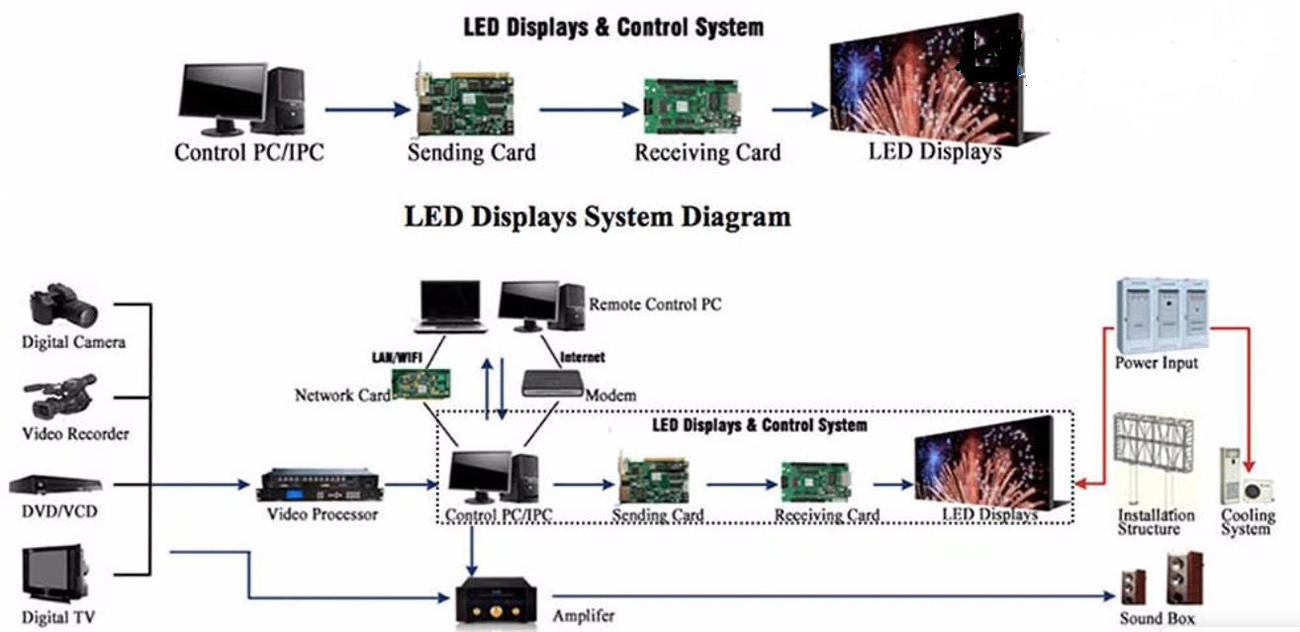LED, which stands for Light Emitting Diode, is a solid-state semiconductor device that can directly convert electricity into light. The LED's semiconductor wafer consists of three parts: a P-type semiconductor, where holes dominate, an N-type semiconductor, where mainly electrons are found, and a quantum well of 1 to 5 cycles in the middle. When the current passes through the wire, it pushes the electrons and holes towards the quantum well where the electrons and holes combine. This combination produces photons of energy, which is the principle of LED light. The material forming the P-N junction determines the wavelength of the light, which is the color of the light. The LED can achieve hundreds or even thousands of color changes.
To maintain LED displays, first, determine the type of HUB board used for the module or unit board to ensure the interface definition of the wiring is the same. Second, send the appropriate program to the receiver card based on the module or unit board model to ensure that they are displayed under the correct procedure. This is a prerequisite for finding out the cause of the failure. The model number of the module or unit board is usually printed on the PCB. Finally, observe the module or unit board's phenomenon to determine the initial fault, such as common blind lights, string dots, small squares, etc. Use the multimeter to find out the fault, mainly using the short circuit detection method between the chip and the lamp pin detection.
Whenever installing an outdoor LED display, a few necessary precautions must be taken. The working environment can be harsh, with sun, rain, wind, and dust in the mix. When electronic equipment is wet or exposed to moisture, it can cause short circuits or even fire, resulting in malfunctions or losses. The display may also be attacked by strong electricity and magnetism generated by lightning. Moreover, the display itself will produce a certain amount of heat when working, and if the ambient temperature is too high and there is poor heat dissipation, the integrated circuit may not work correctly, or even be burned, so the display system cannot function correctly. The audience is wide, and the viewing distance requirement is far, with a wide field of view requirement. The ambient light changes significantly, especially when exposed to direct sunlight.



